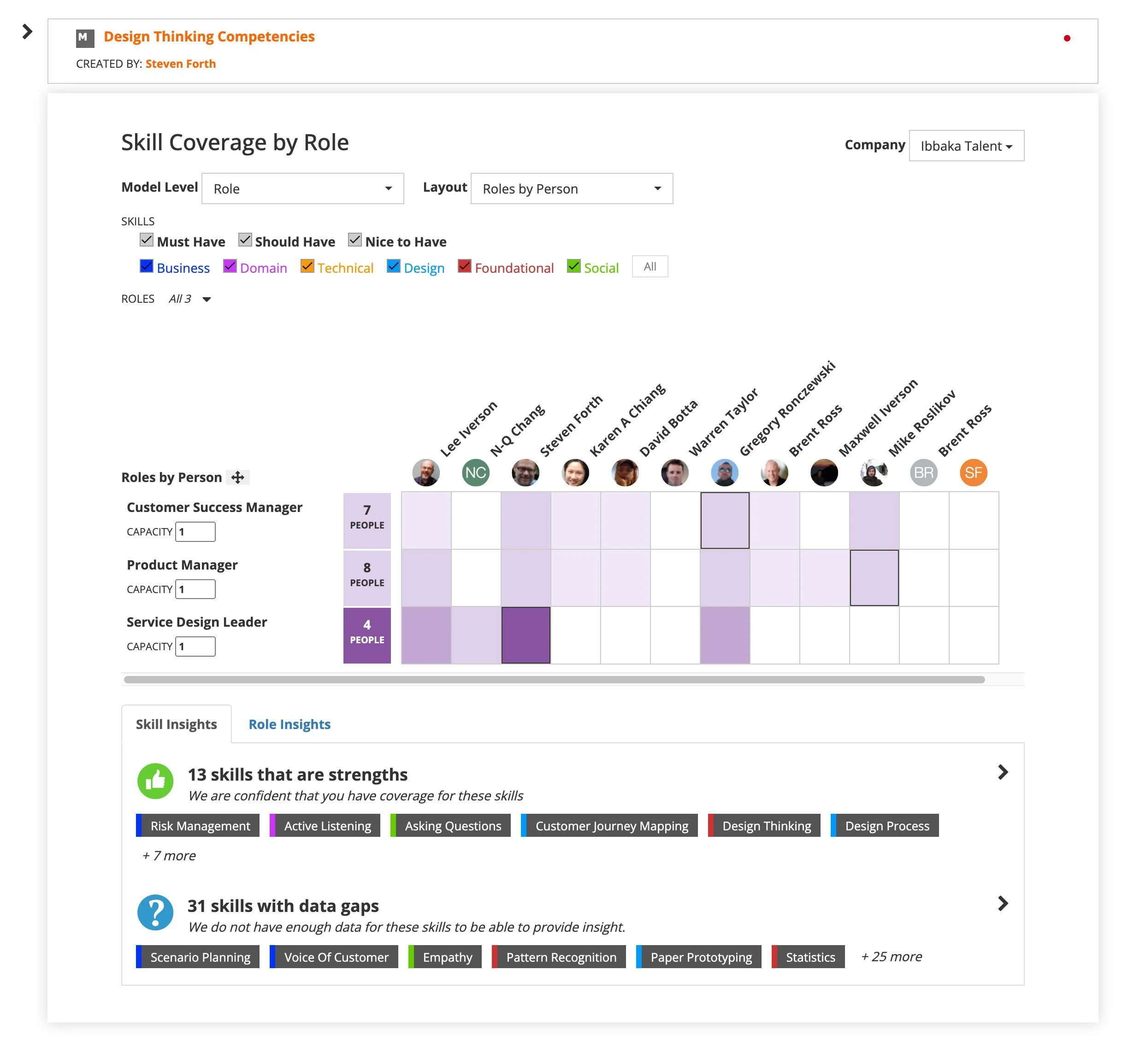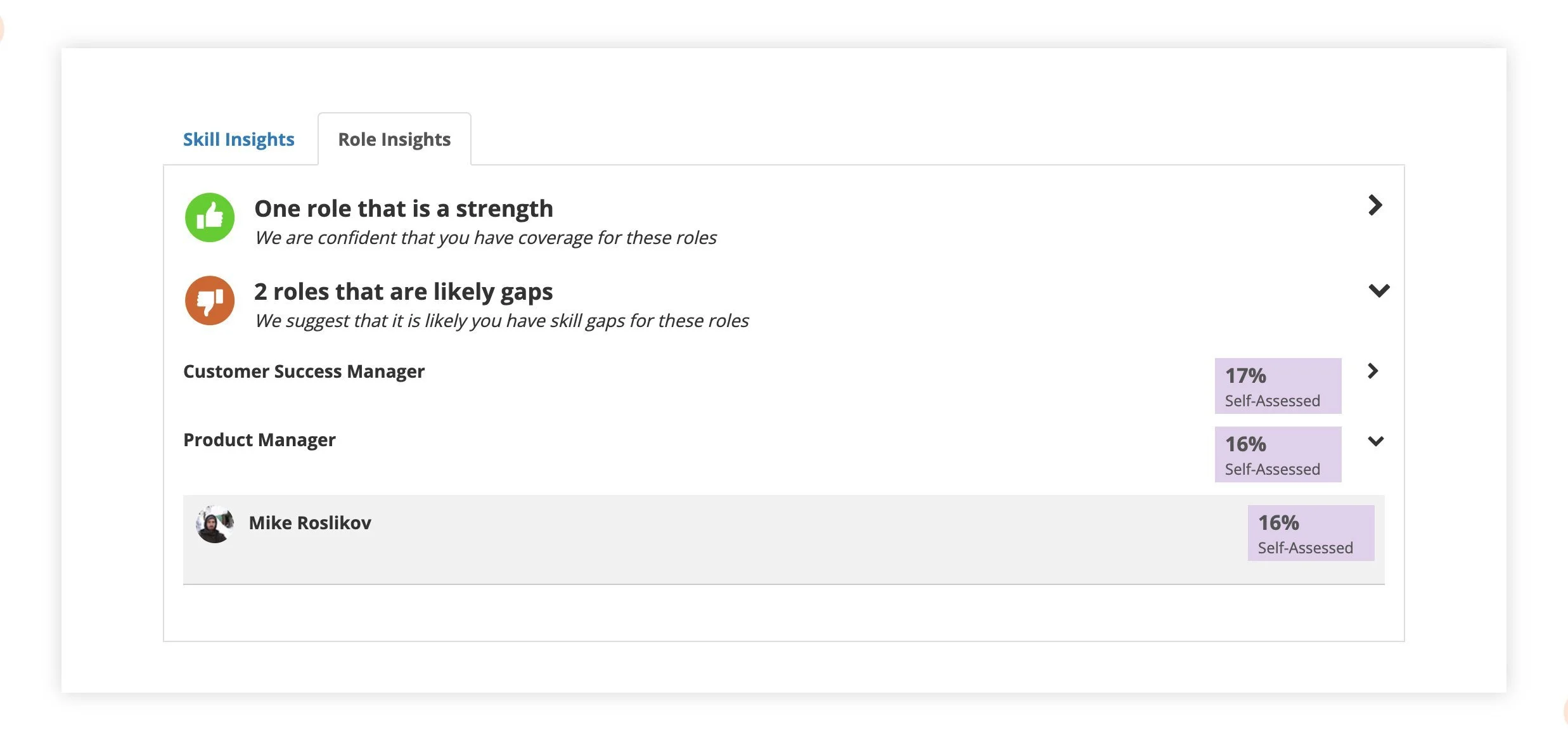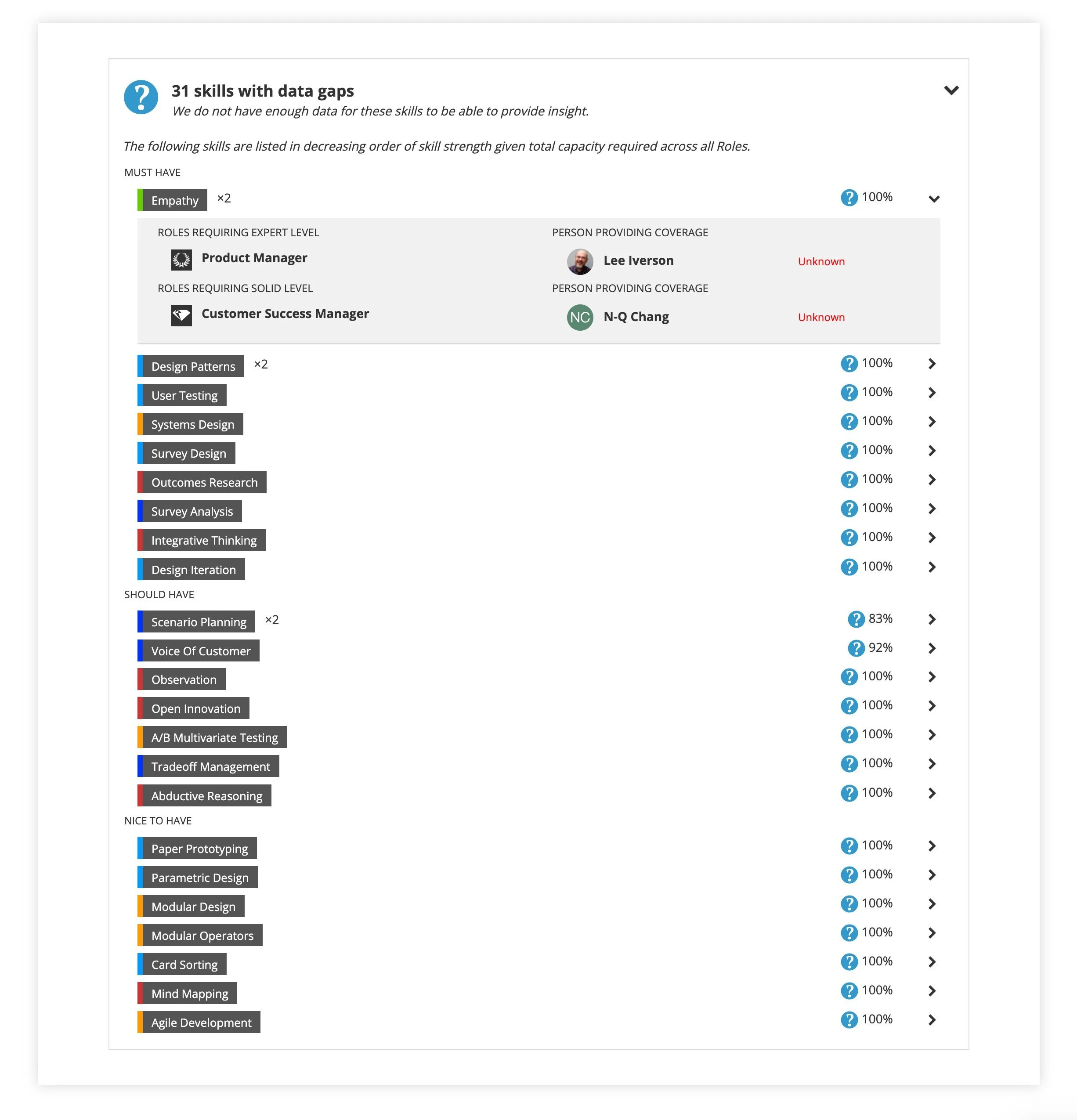What does a role coverage and skill gap analysis look like?
Steven Forth is co-founder and managing partner at Ibbaka. See his skill profile here.
When an organization needs to adopt a new capability or test its ability to deliver on its goals it needs to conduct a role coverage and skill gap analysis. Failing to do this materially increases the odds of failure.
Strategic success depends on the skills of the people executing the strategy. If there are not enough people with the critical skills the strategy will fail, even if it was the right strategic choice. There is a common saying, ‘culture eats strategy.’ Perhaps. But just as important is having the skills needed to execute on that strategy.
Please take this short survey on how skill data is collected and used.
How does one do that? Fortunately, a role coverage and skill gap analysis can be undertaken quickly and at a minimal cost. It need take no more than five minutes of people’s time but should be repeated frequently, made part of the work culture, as people’s skills and expertise are changing all the time.
How have your skills changed in the past month?
What do the results of a skill gap look like? Before we go there, let’s define a few terms.
Role coverage
Role coverage has two meanings.
Does an individual have the skill needed for a role at the required level of expertise?
Does the organization have the people it needs to fill the roles?
These two perspectives are brought together in the Skill Coverage by Role interface.
Ibbaka makes it easy to get Role Insights.
And Skill Insights.
See the core concept article on Role Coverage.
Skill gaps
When looking at role coverage one often discovers skill gaps. For the individual these are the skills that are missing or that need to be upgraded. For the organization, the skill gap analysis shows where investments are needed.
Note that the most effective investments are in skills, not roles (or competencies). Investments in skills are more fungible and help develop adaptive and resilient organizations.
See the core concept article on Skill Gaps.
A simple process for role coverage and skill gaps analysis
Conducting a Role Coverage and Skill Gap Analysis does not have to be difficult. All one needs to begin is a list of roles with the skills needed for those roles attached. Most companies can pull this together in a few hours.
One then has people take a simple skill survey, self assessing their skills. Yes, self assessments can be weak and unreliable signals., but they give a starting point, and that is what is needed.
Ibbaka’s platform can generate a role coverage and skill gap report from this and give you the initial insights you need to begin to take action.
A more complete description of the process is as follows:
Have clear goals and map the goals to the roles needed to fill them
Define the skills needed for the roles (the first time around do not get fancy and include intermediate constructs like Behaviors or Tasks)
Run an initial skill survey relying of self assessments
Probe the Role Insights and Skill Insights to see what actions you need to take
Consider upgrading the Role Model with additional structure and detail, you could add Tasks or Behaviors, prune skills, adjust required levels of expertise
Repeat the skill survey at a regular cadence or after interventions (or both)
Use the trend data to understand what interventions work
Role coverage and skill gap analysis is NOT a one time thing
As noted above, the skill survey should be done more than once. Why is this? There are three main reasons.
People’s skills change, how the skills are applied change, the connections between people change.
Interventions need to be tracked. Whether it is the opportunity to work on new things, learning provided, new people added to the mix, the impact of interventions has to be tracked and their effectiveness judged.
Trends are important. A skill survey is a snapshot in time. By itself it cannot tell you what direction things are headed in. Is role coverage improving or decaying? Are skill gaps widening or closing?
There are two ways to track change over time. One is in response to interventions. Find skill gaps, make an intervention, see what changes. The other is to establish a regular cadence. If it takes only a few minutes a month to update one’s skill profile, make that a habit. Look at role coverage and skill gaps in monthly meetings or whenever a new team is being put together. This will give people the insights needed to shape skills development, rather than just reacting to gaps.
How will you close the skill gaps you discover?
There are many ways to close skill gaps. In my experience the most effective way is not learning, or hiring new people. It is giving people projects to work on, roles to fill and people to work with that is most likely to build new skills. It is not just pure competence that matters, being able to apply the skills and use them with other people is just as important.
In some cases more formal training can be useful. Taking a course is not likely to lead to true proficiency on any skill, but it is one way to get started and to learn the foundations. There are as many ways to learn as there are people, none of us learns in exactly the same way as others, so it is best to offer many training options, many paths to the same goal. What matters is then tracking the impact of the learning and training on role coverage.
Sometimes one needs to add new people. This can be absolute, the organization needs to hire a new person for a new role, or relative, where one has some people able to perform the role but needs more of them to support growth.
Whatever approach you take to closing skills gaps, and you will likely need to blend all three, conducting periodic skill surveys will be an important way to track progress.
More posts on Role Coverage and Skill Gap Analysis
What does a role coverage and skill gap analysis look like?
How should your organization measure role coverage and skill gaps?
Why Role Coverage and Skill Gap Analysis is Mission Critical
How is your organization collecting and using data about skill gaps?
How to Understand Skill Coverage for Key Roles in Your Organization - Ibbaka Demo













